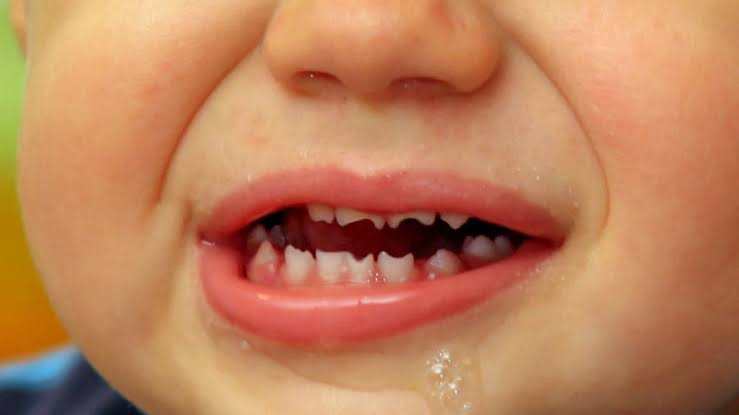Congenital Syphilis;
Introduction:
Congenital syphilis, an insidious infection transmitted from mother to fetus during pregnancy, poses a significant health threat globally.

Cause of Congenital Syphilis:
Congenital syphilis is caused by the transmission of the bacterium Treponema pallidum from an infected mother to her fetus during pregnancy or childbirth. Here’s how it occurs:
Maternal Transmission:
- Vertical Transmission: The bacterium can cross the placenta and infect the fetus directly during pregnancy. This transmission can occur at any stage of maternal syphilis infection, including primary, secondary, or latent syphilis.
- During Childbirth: If the mother is infected but untreated, the baby can acquire syphilis during childbirth as the infant passes through the birth canal, especially if there are active lesions present, such as chancres.
Mechanism of Transmission:
- Placental Barrier: Treponema pallidum can cross the placental barrier, allowing direct access to the fetal bloodstream and tissues.
- Infection of Fetal Tissues: Once in the fetal bloodstream, the bacterium can disseminate throughout the fetus’s body, leading to systemic infection and potential organ damage.
Timing of Infection:
- Early Infection: Infections occurring early in pregnancy may result in more severe congenital syphilis manifestations, as the fetus is exposed to the bacterium for a longer duration of gestation.
- Late Infection: Even if the infection occurs later in pregnancy, the fetus is still at risk of congenital syphilis, highlighting the importance of screening and treatment throughout pregnancy.
Risk Factors of Congenital Syphilis:
1. Maternal Factors:
- Untreated Syphilis: Mothers who have untreated syphilis during pregnancy pose a significant risk to the fetus.
- Late or No Prenatal Care: Lack of prenatal care or late initiation of care increases the likelihood of undiagnosed or untreated syphilis.
- History of Sexually Transmitted Infections (STIs): Mothers with a history of other STIs may be at higher risk for syphilis.
2. Pregnancy Factors:
- Vertical Transmission: Syphilis can be transmitted from mother to fetus during pregnancy or delivery.
- Stage of Infection: Maternal syphilis infection stage (primary, secondary, or latent) affects the risk of transmission to the fetus.
- Duration of Infection: The longer the mother remains untreated, the higher the risk of transmitting syphilis to the fetus.
3. Socioeconomic Factors:
- Limited Access to Healthcare: Women with limited access to prenatal care may not receive timely testing and treatment for syphilis.
- Poverty: Socioeconomic factors such as poverty can impact access to healthcare services and increase the risk of untreated syphilis.
4. Behavioral Factors:
- High-Risk Sexual Behavior: Engaging in high-risk sexual behavior, such as unprotected sex or multiple sexual partners, increases the risk of syphilis infection in women of childbearing age.
- Drug Use: Substance abuse, including intravenous drug use, can be associated with increased risk of syphilis infection and poor prenatal care.
5. Geographic Factors:
- Prevalence of Syphilis: Geographic areas with high rates of syphilis among women of reproductive age are more likely to see cases of congenital syphilis.
- Access to Healthcare Services: Disparities in healthcare access and quality may contribute to higher rates of congenital syphilis in certain regions.
Signs and Symptoms:
1. Early Signs (Birth to 2 Years):
- Skin Rashes: Characteristic rash often appearing on the palms of the hands and soles of the feet.
- Mucocutaneous Lesions: Lesions around the mouth, genitals, or anus.
- Hepatosplenomegaly: Enlargement of the liver and spleen.
- Fever: Persistent or recurrent fever.
- Failure to Thrive: Poor weight gain and growth despite adequate caloric intake.
2. Later Signs (2 Years and Beyond):
- Dental Anomalies: Hutchinson teeth (notched incisors), mulberry molars, or other dental abnormalities.
- Skeletal Abnormalities: Such as saber shins (anterior bowing of the tibia), frontal bossing, or saddle nose deformity.
- Deafness: Sensorineural hearing loss may develop.
- Neurological Symptoms: Developmental delays, seizures, or other neurological impairments.
- Interstitial Keratitis: Inflammation of the cornea, leading to vision problems.
3. Other Manifestations:
- Jaundice: Yellowing of the skin and eyes due to liver involvement.
- Anemia: Low red blood cell count, leading to fatigue and weakness.
- Thrombocytopenia: Low platelet count, increasing the risk of bleeding.
- Pneumonia: Respiratory symptoms such as cough, difficulty breathing, or lung infiltrates on imaging.
4. Asymptomatic Cases:
- Screening Required: Some infants may not exhibit obvious symptoms but still require screening due to maternal syphilis infection.
- Delayed Onset: Symptoms may appear later in infancy or childhood, emphasizing the importance of continued monitoring and follow-up.
What is Hutchinson Triad of congenital syphilis?
Hutchinson Triad include Hutchinson teeth, Interstitial Keratitis and Sensorineural Deafness. Hutchinson triad holds particular diagnostic significance. Let’s see in detail:
a. Hutchinson Teeth
A hallmark feature of congenital syphilis, Hutchinson teeth present as notched, widely spaced, and peg-shaped incisors. The characteristic screwdriver-like appearance of these teeth reflects the developmental disturbances affecting the dental enamel, providing clinicians with a valuable diagnostic clue during examination.
b. Interstitial Keratitis
Interstitial keratitis, inflammation of the corneal stroma, constitutes another component of the Hutchinson triad. Affected individuals may present with photophobia, tearing, and corneal opacities, leading to visual impairment if left untreated. The association between interstitial keratitis and congenital syphilis underscores the importance of ophthalmologic evaluation in affected infants.
c. Eighth Nerve Deafness
Eighth nerve deafness, or sensorineural hearing loss, completes the Hutchinson triad and represents a significant complication of congenital syphilis. The involvement of the auditory nerve can lead to varying degrees of hearing impairment, affecting language development and overall quality of life. Audiological assessments are essential for early detection and intervention to optimize auditory outcomes in affected infants.
Differential Diagnosis
The clinical presentation of congenital syphilis overlaps with various other neonatal conditions, necessitating a comprehensive differential diagnosis. Conditions such as intrauterine infections, metabolic disorders, and congenital anomalies should be considered and ruled out through thorough evaluation and laboratory testing.
Laboratory Diagnosis Of Congenital syphilis:
The laboratory diagnosis of congenital syphilis entails a systematic approach involving serological tests, confirmatory assays, and ancillary investigations to facilitate accurate detection and management of the infection. Below, we delve into each aspect of laboratory diagnosis in detail.
1. Serological Tests
Serological testing serves as the cornerstone of diagnosing congenital syphilis, leveraging the detection of antibodies against Treponema pallidum in maternal and infant specimens. Two types of serological tests are commonly employed:
- Non-treponemal Tests: Non-treponemal tests, such as the Venereal Disease Research Laboratory (VDRL) and Rapid Plasma Reagin (RPR) tests, detect antibodies that react with cardiolipin, a component of host cells damaged by T. pallidum. These tests provide qualitative and quantitative results, aiding in disease monitoring and treatment response assessment.
- Treponemal Tests: Treponemal tests, including the Treponema pallidum particle agglutination assay (TPPA), fluorescent treponemal antibody absorption (FTA-ABS) test, and enzyme immunoassays (EIAs), detect specific antibodies targeting T. pallidum antigens. These tests offer high sensitivity and specificity, confirming the presence of syphilis infection.
2. Confirmatory Testing
Confirmatory testing is essential to validate the results obtained from initial serological assays, particularly in cases where discordant or equivocal findings arise. The following confirmatory tests are commonly employed:
- FTA-ABS Test: The FTA-ABS test utilizes fluorescently labeled anti-human antibodies to detect antibodies bound to T. pallidum antigens, confirming the presence of syphilis infection. It is considered the gold standard confirmatory test due to its high specificity.
- TPPA: Similar to the FTA-ABS test, TPPA detects specific antibodies against T. pallidum antigens but employs particle agglutination instead of fluorescence. TPPA serves as an alternative confirmatory assay with comparable performance to FTA-ABS.
3. Cerebrospinal Fluid (CSF) Analysis
In cases of suspected neurosyphilis or symptomatic central nervous system involvement, CSF analysis may be warranted to assess for the presence of T. pallidum. CSF examination typically involves the following parameters:
- CSF VDRL Test: The CSF VDRL test detects antibodies against T. pallidum in the cerebrospinal fluid, indicating active infection within the central nervous system. Positive CSF VDRL findings necessitate prompt treatment and close neurological monitoring.
- CSF Cell Count and Protein Analysis: Evaluation of CSF cell count and protein levels aids in assessing for the presence of inflammation and neuronal damage associated with neurosyphilis, guiding therapeutic decision-making and prognostication.
Treatment of Congenital Syphilis:
1. Infants Up to 4 Weeks of Age:
- Drug: Aqueous Crystalline Penicillin G
- Dose: 50,000 units/kg per dose intravenously (IV)
- Twice Daily: Every 12 hourly for the first seven days of life
- After 7 days: Every 8 hours for 10 to 14 days
- Alternative: Procaine Penicillin G
- Dose: 50,000 units/kg/day
- Route: Intramuscular (IM)
- Duration: 10 to 14 days
2. Infants Older than 4 Weeks and Older Children:
- Drug: Aqueous Penicillin G
- Dose: 50,000 units/kg per dose intravenously (IV)
- TDS: Every 6 hourly
- Duration: 10 to 14 days
3. Management of Asymptomatic Infants Potentially Exposed to Syphilis:
- Recommendation: Benzathine Penicillin G
- Dose: 50,000 units/kg per dose
- Route: Intramuscular (IM)
- Single Dose: In asymptomatic children of mothers who received adequate treatment more than 4 weeks before delivery
Complications:
Untreated congenital syphilis can lead to severe complications, including but not limited to stillbirth, prematurity, neurodevelopmental deficits, and multiorgan dysfunction. Long-term sequelae may persist into adulthood, underscoring the importance of timely intervention and follow-up care.
In conclusion, congenital syphilis remains a significant public health concern, necessitating heightened awareness, routine screening, and timely intervention to mitigate its adverse effects. By understanding its clinical presentation, risk factors, and appropriate management strategies, healthcare providers can effectively combat the scourge of congenital syphilis and safeguard maternal and neonatal health.
Read more:


Pingback: Shingles : Causes, Symptoms, Treatment, and Complications - Modern Health
Pingback: Common Health Conditions - Modern Health
Pingback: Common health conditions - MedWebMD